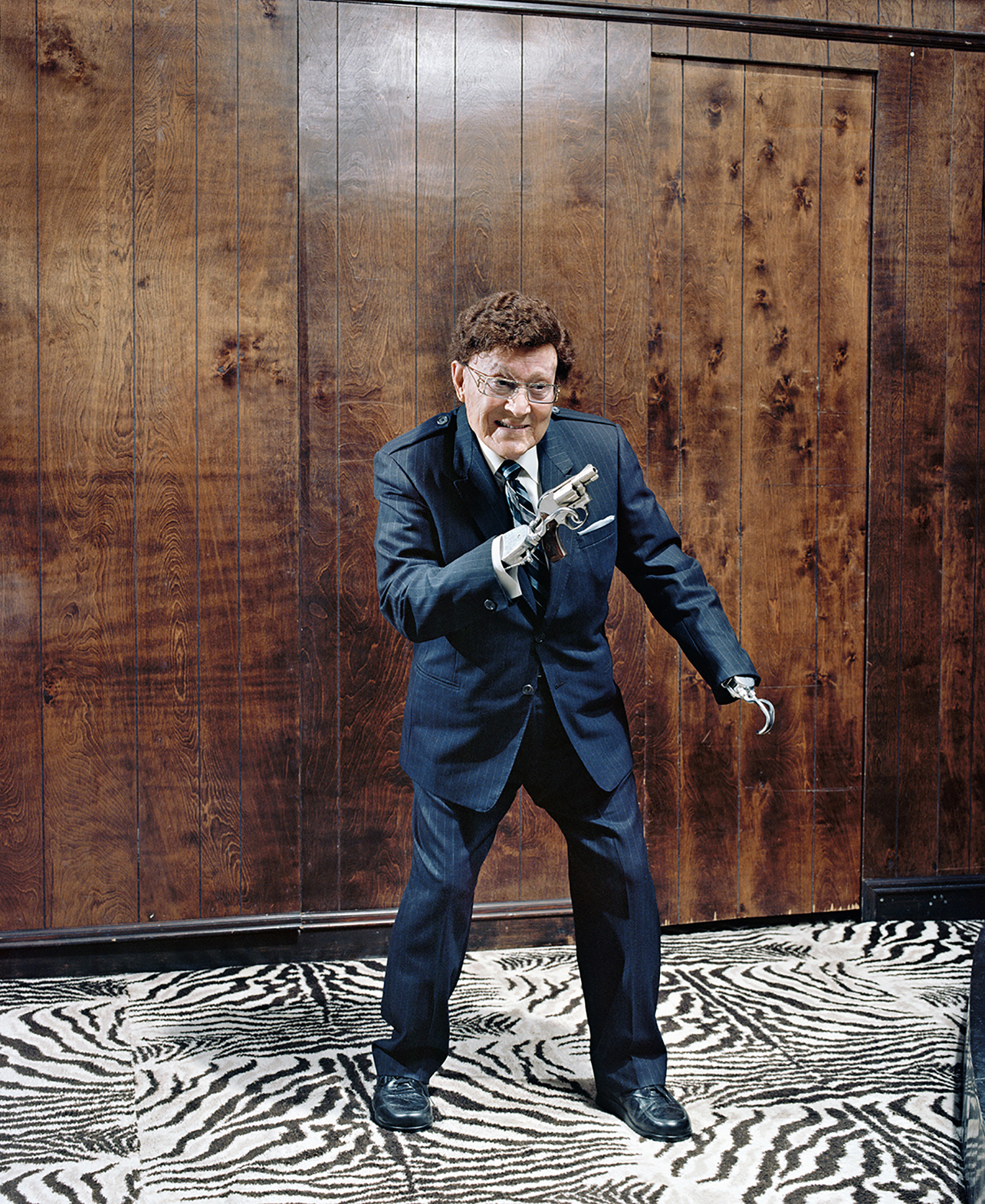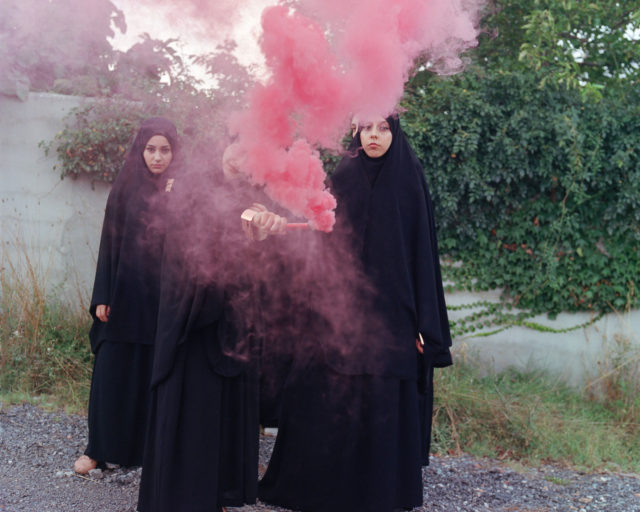Max Pinckers is Raising the Stakes

Max Pinckers, Untitled, 2016–17, from Margins of Excess, self-published, Brussels, 2018
© and courtesy the artist
With each new project that Belgian artist Max Pinckers has worked on, he has raised the stakes a little bit more in terms of questioning documentary photography, and how the genre relates to notions of truth and fiction. As a consequence, book concepts for these projects have become more complex and narratives more layered. And as the books become more ambitious, the role of text also becomes more important. This is evident not only in the amount of text being used, but also, and perhaps more important, in the different sorts of text being used, ranging from the didactic essay and interview (Lotus, with Quinten De Bruyn; Lyre Press, 2016) to found newspaper quotes (The Fourth Wall; self-published, 2012), as well as torn-out newspaper clippings and reprinted blog posts (Will They Sing Like Raindrops or Leave Me Thirsty; self-published, 2014).

Max Pinckers, Untitled, 2016–17, from Margins of Excess, self-published, Brussels, 2018
© and courtesy the artist
News stories play a significant part in Pinckers’s work. How news media grapple with concepts such as truth, lies, half-facts, and fictions in what we now call a “post-truth” era is the subject of his praised book Margins of Excess. Self-published in 2018 and made between 2016 and 2017, starting in the midst of the Trump presidential campaign turmoil, the book brings together the stories of six individuals whose own personal beliefs and truths were dramatically exposed as false or deceiving in the mass media. In between these six main stories Pinckers strings together a freewheeling series of small but sensational tales of UFOs, cloned military dogs, crying Virgin Marys, suspicious white vans, accidental bombings, and fictional presidents.

Max Pinckers, Untitled, 2016–17, from Margins of Excess, self-published, Brussels, 2018
© and courtesy the artist
For Pinckers, text is primarily a way to contextualize the images, and a tool to steer the reader in a certain direction or interpretation. Margins of Excess is by far Pinckers’s most challenging book in terms of assembling a coherent narrative: he once again cleverly resorts to the use of news stories as a way to frame the work, letting it rub against and bounce off classic media discourse. However, in a very effective way he also uses these news stories as formal support elements to provide the book’s more than three hundred pages with the necessary structure. This is not the first time he’s done that—it’s also modestly present in Will They Sing—but here he takes this ingenious method to a higher level.

Max Pinckers, Untitled, 2016–17, from Margins of Excess, self-published, Brussels, 2018
© and courtesy the artist
Each one of the stories begins with a reproduced news article title and introduction on the right page, printed on a slightly thinner, light-gray paper. That these articles aren’t presented as full-on clippings was a deliberate choice by Pinckers. This way he avoided eclectic visual clutter, and instead created a unity between all the chapters’ opening texts on a formal level. After each news title, the following right page contains a portrait of the story’s protagonist made by Pinckers. Then comes a double spread with a full-bleed image and a quote from another news source, reversed out on the photograph and at the top left corner of the left page, as you would find in tabloid press and gossip magazines. Around halfway through each story comes a fully reproduced news article on the subject—on the same thinner paper used at the beginning of the chapter—clearly recognizable as such by a vertical line flanking the text on the left.

Max Pinckers, Untitled, 2016–17, from Margins of Excess, self-published, Brussels, 2018
© and courtesy the artist
Every separate story then concludes with a long interview conducted by Pinckers and his wife, Victoria Gonzalez-Figueras, with the protagonist, allowing them to tell their version of the story, followed by a small archive image given to the artists, on the bottom of the right page. These transcriptions are also printed on thinner—but this time yellow—paper. Lacking this interview portion, however, is the very first story in the book, as its hero, Herman Rosenblat, died in 2015, one year before Pinckers started photographing the series. (For the opening portrait, he used a stand-in.) In between the stories, the small tales also have their distinctive and recurring image-text layout.

Max Pinckers, Untitled, 2016–17, from Margins of Excess, self-published, Brussels, 2018
© and courtesy the artist
Equally noticeable in Margins of Excess is when Pinckers purposefully leaves out any form of explanation, as is the case with the meandering series of staged and theatrically lit scenes of people or couples in the street, looking shocked, stressed, anxious, or upset. They are all actors—professional mourners, Pinckers calls them—that he used to re-create the type of imagery the media publish when something horrific occurs, like a bombing or a tragic accident: emotionally charged close-ups of people reacting to the event. Except that such an event never happened, so there is no context to be provided. Here, lack of text is just as important as text.
Read more from The PhotoBook Review Issue 016 or subscribe to Aperture and never miss an issue.


























